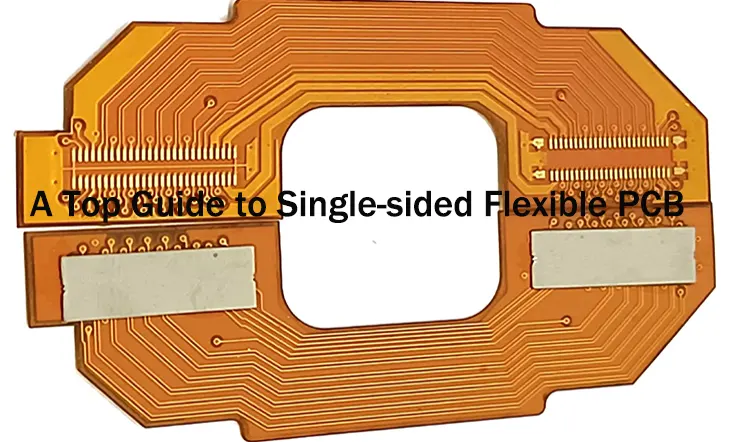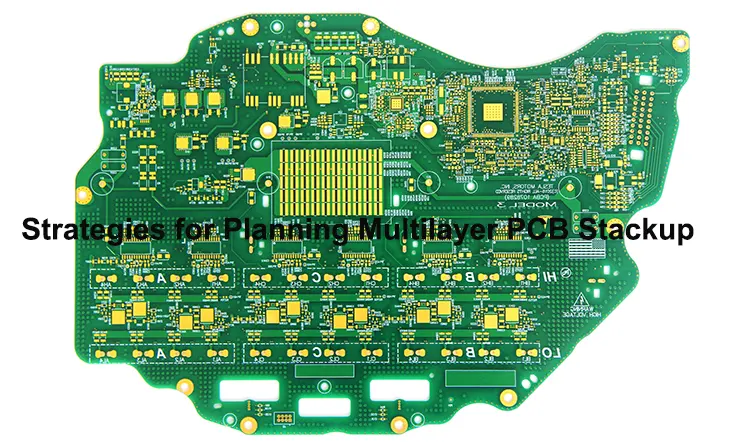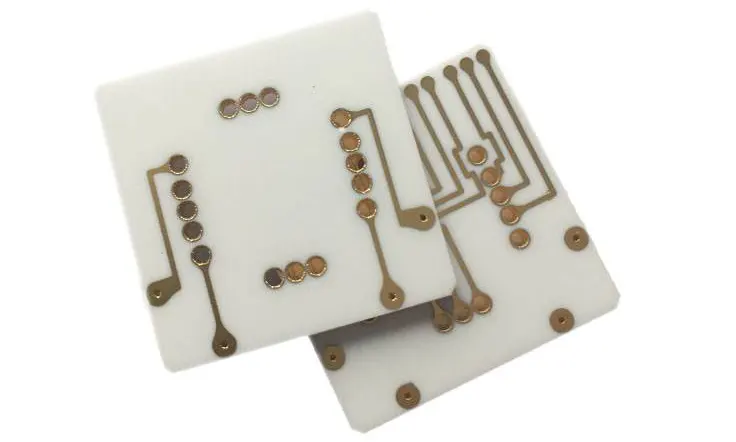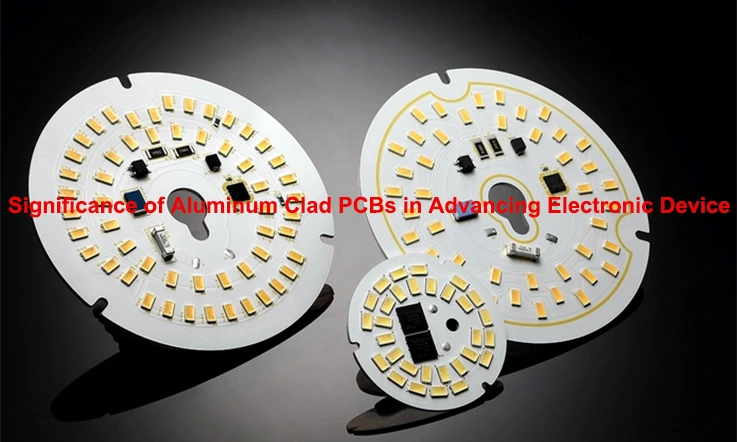
Welcome to JarnisTech’s in-depth look at the ITEQ IT-150DA high-Tg PCB laminate. In today’s demanding electronics landscape, choosing the right foundational material directly influences your product’s performance, reliability, and manufacturability. This is especially true in challenging fields like power electronics, automotive systems, medical devices, and communications. This guide is here to give engineers, designers, and procurement professionals a solid understanding of IT-150DA.
We’ll explore its core properties, electrical and thermal characteristics, effective design and manufacturing strategies, and real-world applications. You’ll also find comparisons with other laminates, assembly considerations, and insights into interpreting datasheets and certifications. Furthermore, we’ll show you why JarnisTech is a dependable partner for sourcing and expertly manufacturing ITEQ IT-150DA PCBs, and how you can easily connect with us for quotes, samples, and custom engineering support. Let’s dive into how IT-150DA, combined with JarnisTech’s expertise, can elevate your next PCB project.
Introduction to ITEQ IT-150DA High-Tg PCB Laminate
The ITEQ IT-150DA PCB laminate is engineered for electronic assemblies that will face elevated temperatures and demanding operational environments. This high-Tg material offers stability and reliability beyond that of traditional FR-4 laminates, making it well-suited for applications such as power electronics, automotive modules, and sophisticated communication devices. Its performance characteristics provide a balanced platform for engineers and manufacturers looking for both thermal endurance and electrical precision. To make the most of IT-150DA’s capabilities, particularly in intricate designs, careful PCB fabrication and assembly processes are certainly beneficial. We’re ready to help you achieve excellent outcomes when working with this PCB advanced material.
Overview of ITEQ IT-150DA Laminate Properties
The ITEQ IT-150DA laminate has a glass transition temperature (Tg) of approximately 180°C. This property means it maintains its structural integrity under increased thermal stress compared to standard laminates.
Key electrical properties include:
●A dielectric constant (Dk) of approximately 3.64 (<3.7 at 10 GHz).
●A dissipation factor (Df) of approximately 0.0065 ((<0.007at 10 GHz).
These values contribute to high-frequency signal clarity with minimal loss.
Further notable characteristics are:
●A thermal decomposition temperature (Td) exceeding 360°C.
●A Comparative Tracking Index (CTI) that facilitates enhanced electrical insulation.
| Property | Value | Test Frequency / Notes |
| Glass Transition Temperature (Tg) | ~180°C | DSC Method |
| Dielectric Constant (Dk) | ~3.64 | At 10 GHz |
| Dissipation Factor (Df) | ~0.0065 | At 10 GHz |
| Thermal Decomposition (Td) | >360°C | TGA @ 5% Weight Loss |
| Comparative Tracking Index (CTI) | ≥ 300 | IEC 60112 |
Together, these properties allow the material to perform reliably in complex PCB designs that require stability in both thermal and electrical domains.
Why Choose High-Tg Laminates for Demanding Environments?
High-Tg laminates, such as ITEQ IT-150DA, provide a durable solution for electronics operating in challenging environments characterized by sustained or intermittent heat exposure that could otherwise be detrimental.
The advantages of using high-Tg laminates in such conditions include:
●Resistance to deformation and degradation during lead-free soldering processes.
●Stability through thermal cycling. These attributes help preserve circuit functionality over extended operational periods.
| Feature | Benefit in Harsh Conditions |
| Tg ~180°C | Withstands higher soldering temperatures |
| High Thermal Stability | Maintains structure through reflow cycles |
| Low Z-axis Expansion | Reduces via stress and fracture risk |
| CAF Resistance | Supports extended operating life |
| Lead-free Process Compatibility | Prevents board warpage and delamination |
In sectors like automotive electronics and medical device manufacturing, where operational dependability is a high priority, selecting a laminate with an elevated Tg and controlled thermal expansion reduces risks associated with mechanical stress and material fatigue. This choice can truly give you peace of mind.
Comparison with Conventional FR-4 Materials
Conventional FR-4 materials are adequate for many general electronic applications; however, their lower Tg values generally limit their suitability for heat-sensitive scenarios.
In contrast, the ITEQ IT-150DA PCB laminate provides substantial enhancements in both thermal endurance and electrical performance. Benefits when compared to conventional FR-4 include:
●Lower dielectric loss, leading to reduced signal distortion.
●Higher thermal limits, resulting in less mechanical wear. These factors contribute to a more stable platform for complex multilayer and high-frequency PCB layouts.
This illustrates how IT-150DA’s advanced properties can contribute to extended product lifespan and greater reliability in environments where conventional materials might fall short.
Electrical and Thermal Characteristics of IT-150DA
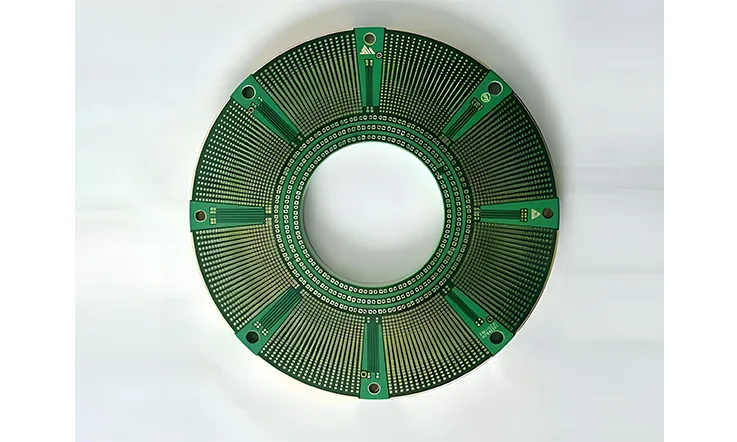
The electrical and thermal behavior of the ITEQ IT-150DA PCB laminate highlights its suitability for sophisticated power and automotive electronics. These properties affect circuit reliability, PCB manufacturability, and long-term stability when subjected to demanding conditions. A good grasp of these characteristics also helps in developing effective manufacturing and assembly strategies to maximize the material’s performance in the final application.
Glass Transition Temperature and T260/T288 Durability
The ITEQ IT-150DA laminate has a glass transition temperature (Tg) of approximately 180°C. This attribute enables it to withstand elevated temperatures encountered during PCB assembly and in-service operation, supporting stability throughout soldering processes, including lead-free reflow. This resilience is a real asset during manufacturing.
Further thermal endurance is demonstrated by:
●T260 / T288 Performance: These measurements indicate the duration the material can withstand 260°C and 288°C, respectively, before significant degradation. This showcases its ability to maintain mechanical strength and insulation properties through repeated thermal cycles typical in automotive and power electronics manufacturing.
Low Dk/Df and High CTI for Signal Integrity
This laminate offers beneficial electrical properties for signal integrity:
●Low Dielectric Constant (Dk): Approximately 3.64 (at 10 GHz).
●Low Dissipation Factor (Df): Approximately 0.0065 (at 10 GHz).
These characteristics help preserve signal clarity by reducing losses and distortion at high frequencies.
Additionally:
●High Comparative Tracking Index (CTI): The material’s CTI rating signifies a strong resistance to surface electrical breakdown. This reduces the likelihood of short circuits and contributes to improved safety margins.
These combined attributes make the ITEQ IT-150DA PCB laminate a commendable selection for circuit boards in communication equipment and medical electronics, where signal fidelity and electrical safety are held in high regard.
Performance Under High Voltage and Heat Stress
The IT-150DA PCB laminate is engineered to endure high-voltage applications while preserving its structural and electrical integrity.
Key aspects of its resilience include:
●High Decomposition Temperature (Td): Exceeding 360°C, this indicates the material’s ability to resist chemical breakdown and delamination when subjected to prolonged heat exposure.
●Stress Endurance: These features contribute to dependable performance in environments such as automotive power modules or industrial control systems, where PCBs are often exposed to combined thermal and electrical stresses over extended periods.
Design Strategies for ITEQ IT-150DA PCB

When working with the ITEQ IT-150DA PCB laminate, thoughtful design approaches can help maximize the material’s advantages in high-performance electronic applications. Understanding how to configure stackups, manage impedance, and optimize for manufacturing processes contributes to achieving reliable and efficient circuit boards suited for power electronics, automotive, and communication industries. Adherence to sound design principles also facilitates smoother transitions to fabrication and assembly.
Stackup Recommendations for High-Speed Signals
Designing multilayer PCBs with IT-150DA calls for careful stackup planning to support high-speed signal transmission. For enhanced signal integrity and reduced electromagnetic interference, consider the following:
Electromagnetic interference, consider the following:
●Symmetrical Layer Arrangements: Employing balanced stackups helps manage mechanical stresses and maintain consistency.
●Dedicated Ground and Power Planes: Incorporating these planes provides stable voltage references and return paths.
This approach is particularly applicable to communication devices and medical electronics. In these fields, the electrical characteristics of IT-150DA, combined with well-managed layer thicknesses and dielectric properties, aid in maintaining desired signal performance.
| Stackup Parameter | Typical Value/Recommendation |
| Number of Layers | 4–12 layers, depending on design complexity |
| Core Thickness | 0.2 mm – 0.8 mm |
| Prepreg Thickness | 0.05 mm – 0.15 mm |
| Dielectric Thickness (per layer) | ~0.1 mm – 0.2 mm |
| Ground/Power Plane Placement | Adjacent to signal layers to reduce EMI |
| Layer Symmetry | Maintain balanced stackups to limit warping |
Controlled Impedance and Differential Pair Routing
The low dielectric constant and stable dissipation factor of IT-150DA PCB laminates offer a consistent medium for controlled impedance circuits. Key considerations include:
●Precise Calculations: Designers are expected to determine trace widths and spacing with precision to align with defined impedance values. This becomes particularly applicable when working with differential pairs, which are commonly found in automotive communication interfaces and high-frequency power electronics.
●Differential Pair Geometry: Routing differential pairs with matched lengths and consistent spacing reduces signal skew and reflection, taking advantage of the material’s inherent electrical stability for dependable data transmission.
Design for Manufacturability (DFM) Tips
Aligning ITEQ IT-150DA PCB designs with manufacturing capabilities helps support stable product quality and reliable production yields. The following DFM aspects are worth attention:
●Physical Parameters: Factors such as minimum trace widths, via sizes, and drill tolerances should be chosen with respect to the material’s mechanical properties and the capabilities of the fabricator.
●Thermal Management in Assembly: Designing for thermal stress during assembly, including appropriate lead-free soldering profiles compatible with IT-150DA’s thermal limits, helps minimize defects and supports long-term board performance.
Consulting with a fabrication partner experienced with high-Tg laminates like IT-150DA, such as JarnisTech, can help address these DFM considerations effectively and optimize your design for successful manufacturing.
| DFM Parameter | Recommended Range / Notes |
| Minimum Trace Width | 4–6 mils (0.1–0.15 mm), depending on fab capability |
| Minimum Via Hole Size | ≥ 0.2 mm diameter |
| Drill Tolerance | ±0.05 mm |
| Copper Thickness | 1 oz to 3 oz standard |
| Lead-Free Soldering Profile | Peak temp ~260°C, compatible with IT-150DA Tg |
| Thermal Cycling Resistance | Confirmed through multiple reflow cycles |
Manufacturing Processes for ITEQ IT-150DA PCBs
Producing dependable PCBs with the ITEQ IT-150DA laminate requires specific manufacturing approaches suited to its distinct thermal and electrical properties. Careful management of drilling, lamination, and via formation helps ensure the material’s advantages translate into durable, high-performance circuit boards for demanding sectors like automotive electronics and medical devices. Successfully navigating these steps often requires specialized knowledge and appropriately configured equipment, something we understand well.
Drilling, Desmear, and Hole Wall Reliability
The approach to drilling IT-150DA PCBs needs to account for the laminate’s thermal resistance and mechanical makeup. For reliable hole preparation, think about:
●Optimized Drilling Parameters: Adjusting speeds and feeds to suit IT-150DA can prevent issues like resin smear or excessive tool wear.
●Effective Desmear Treatments: Proper desmear processes are needed to clean hole walls thoroughly without harming the substrate. This preserves copper adhesion and helps prevent delamination.
●Hole Wall Integrity: Maintaining high-quality hole wall integrity promotes even plating coverage, which in turn helps preserve electrical connectivity and structural reliability in multilayer PCBs, particularly in power and communication systems.
Lamination Cycle Optimization and Prepreg Handling
Achieving uniform bonding and preventing defects such as voids or delamination in IT-150DA boards requires attention to several practices:
●Tailored Lamination Cycles: To suit the characteristics of IT-150DA, lamination parameters such as temperature and pressure must be carefully controlled within the Tg threshold, ensuring reliable mechanical integrity throughout the board structure.
●Prepreg Storage and Handling: Careful storage and handling of prepreg are recommended to prevent moisture absorption. Excess moisture can affect lamination quality and electrical performance, a particular concern for high-Tg PCB laminates used in sensitive medical electronics and automotive systems.
HDI PCB and Via Structure Compatibility
ITEQ IT-150DA PCB laminates are compatible with advanced High-Density Interconnect (HDI) technologies, facilitating the creation of complex via structures. This opens up possibilities for more compact and sophisticated designs. Benefits for HDI designs include:
●Microvia and Blind Via Formation: The material supports the formation of microvias and blind/buried vias, enabling the compact PCB layouts often required by modern communication devices and power electronics.
●Dimensional Stability: With strong dimensional stability and thermal endurance, the material promotes reliable via plating and lowers the likelihood of mechanical stress-related defects during both fabrication and field use. These qualities support dependable manufacturing results and durable performance in complex HDI configurations.
Real-World Applications in Power, Automotive, and Medical Industries

The ITEQ IT-150DA PCB laminate is utilized across various sectors where material stability under thermal and electrical stress influences product dependability. Examining its practical implementation in power systems, automotive electronics, and medical devices reveals how this laminate supports evolving industry needs through reliable performance and good manufacturability. Realizing these benefits in finished products often depends on fabrication and assembly processes attuned to both the material’s properties and the application’s specific requirements.
High TG Requirements in Automotive ECUs and Sensors
Automotive electronic control units (ECUs) and sensor modules frequently operate under elevated temperatures and fluctuating environmental conditions. The IT-150DA laminate meets these challenges due to its characteristics:
●Elevated Glass Transition Temperature (Tg): This enables PCBs to maintain structural integrity during prolonged heat exposure and multiple thermal cycles.
●Sustained Performance: This quality helps in maintaining electrical performance and mechanical durability within the demanding automotive environment, where operational safety and long-term reliability are closely observed.
Medical Device Dependability and CAF Resistance
In medical electronics, board dependability over extended periods is a primary focus, particularly concerning resistance to conductive anodic filament (CAF) formation, which can affect circuit functionality. IT-150DA offers advantages such as:
●CAF Resistance: The laminate shows good resistance against CAF, attributed to its dense resin matrix and thermal endurance.
●Suitability for Demanding Devices: This makes it appropriate for medical devices with stringent performance needs that require long service life and stable electrical characteristics under constant operation and through sterilization processes.
Thermal Management in Power Converter Designs
Power converter PCBs require materials that can handle high currents and dissipate heat effectively to help prevent component failure. IT-150DA PCB laminates contribute by:
●Providing Thermal Stability: Offers thermal stability along with good electrical insulation.
●Supporting Heat Distribution: This supports efficient heat distribution and minimizes thermal stress on solder joints and copper traces.
These properties contribute to longer-lasting power electronics and enhance overall system robustness in industrial and automotive power conversion applications.
Performance Comparison with Other Laminate Brands
When selecting materials for demanding PCB applications, a comparison of the ITEQ IT-150DA laminate with alternatives, such as Isola 370HR and Nanya NPG170, reveals distinct characteristics that influence design and manufacturing decisions. Evaluating these options based on electrical, thermal, and mechanical properties helps manufacturers and designers identify a suitable match for their specific requirements. This informed selection process is a foundational step for successful product development.
IT-150DA vs. Isola 370HR, Nanya NPG170
Each laminate presents a unique set of attributes affecting its suitability across different industries. When considering ITEQ IT-150DA, it offers:
●A balanced combination of high glass transition temperature (Tg).
●Low dielectric loss for signal integrity.
●Good mechanical resilience for durability. These traits may differ from those found in materials like Isola 370HR and Nanya NPG170.
Understanding these variations allows PCB engineers and manufacturers to align their material choice with the performance demands of applications in power electronics, automotive modules, and medical devices.
| Property | ITEQ IT-150DA | Isola 370HR | Nanya NPG170 |
| Tg (DSC, °C) | ~180 | ~180 | ~170 |
| Td (TGA, °C, 5% weight loss) | >360 | >340 | ~330 |
| CTI (V) | ≥250 | 175–300 | 175–250 |
| Mechanical Toughness | Moderate-High | High | Moderate |
| Typical Applications | Power, Auto, Med | Server, Auto, RF | Consumer, Auto |
Material Property Benchmarking Charts
Detailed comparison charts serve as useful tools for evaluating laminates. Such charts typically outline parameters like:
●Glass Transition Temperature (Tg)
●Dielectric Constant (Dk) and Dissipation Factor (Df)
●Coefficient of Thermal Expansion (CTE)
●Moisture Absorption These benchmarks offer a clear view of how IT-150DA positions relative to other laminates.
| Property | ITEQ IT-150DA | Isola 370HR | Nanya NPG170 |
| Dielectric Constant @10 GHz | ~3.64 | ~3.7 | ~4.1 |
| Dissipation Factor @10 GHz | ~0.0065 | ~0.008 | ~0.010 |
| Z-Axis CTE (ppm/°C) | ~55–60 | ~50–65 | ~65–70 |
| Moisture Absorption (%) | ~0.15 | ~0.18 | ~0.20 |
| Decomposition Temp. (Td, °C) | >360 | ~340 | ~330 |
They act as practical references, enabling design engineers to anticipate material behavior during PCB fabrication, assembly, and operational cycles, which is especially pertinent in sectors requiring dependable electrical and thermal reliability.
Cost-Performance Analysis for OEMs
For original equipment manufacturers (OEMs), the decision to adopt a particular laminate involves balancing performance attributes with overall production value. The ITEQ IT-150DA PCB laminate presents several considerations in this context:
●Manufacturing Efficiency: Its properties can contribute to smoother processing.
●Thermal Endurance: Potentially leading to greater product robustness in thermally challenging environments.
●Electrical Stability: Aiding in consistent circuit performance. These aspects can translate into benefits such as reduced defect rates and opportunities for extended product lifespans.
Such factors influence the overall cost-effectiveness when compared to alternatives like Isola 370HR and Nanya NPG170, particularly when coupled with fabrication processes optimized for high TG materials.
PCB Assembly Considerations for IT-150DA
Integrating ITEQ IT-150DA PCB laminates into assembly workflows involves detailed control over thermal profiles, finish compatibility, and material handling to support stable electrical and mechanical outcomes. Applying the correct soldering temperatures, selecting finishes such as ENIG or OSP based on end-use demands, and avoiding issues like delamination or pad detachment all play a role in achieving predictable results. Well-aligned process parameters help manufacturers avoid unnecessary rework and maintain performance standards throughout the product’s operating life.
Soldering Profiles and Assembly Window
Due to its material composition, IT-150DA PCB laminate calls for well-controlled soldering temperature profiles to avoid thermal damage. Key aspects include:
●Tailored Profiles: Manufacturers and PCB assembly engineers should define specific soldering profiles, considering the laminate’s high TG and thermal endurance. This helps achieve consistent solder joints without compromising board performance.
●Optimized Assembly Windows: Properly defined assembly windows for reflow or wave soldering minimize stress on the laminate, aiding in the preservation of copper trace and substrate integrity.
Surface Finish Compatibility (ENIG, HASL, OSP)
Due to its material composition, IT-150DA PCB laminate calls for well-controlled soldering temperature profiles to avoid thermal damage. Getting this right is a big step towards a reliable board. Key aspects include:
●Interaction with Substrate: Finishes like Electroless Nickel Immersion Gold (ENIG), Hot Air Solder Leveling (HASL), and Organic Solderability Preservatives (OSP) each interact differently with the PCB substrate and copper pads.
●Impact on Assembly: Understanding how these finishes influence adhesion, oxidation resistance, and thermal expansion behavior assists in optimizing the PCB assembly process while maintaining signal integrity and mechanical stability.
Avoiding Delamination and Pad Lifting
Selecting surface finishes compatible with the IT-150DA laminate affects both solderability and long-term reliability. Common finishes and their considerations include:
●Material Adhesion: While IT-150DA laminate’s formulation offers good adhesion properties, attention to drilling quality, desmearing procedures, and precise lamination cycle control during fabrication remains advisable.
●Collaborative Best Practices: Understanding how these finishes influence adhesion, oxidation resistance, and thermal expansion behavior helps optimize the PCB assembly process while maintaining signal integrity and mechanical stability.
Data Sheet and Material Certification Breakdown

For manufacturers and design engineers working with ITEQ IT-150DA PCB laminates, a thorough understanding of the material datasheet and associated certifications offers beneficial insights into product capabilities and compliance. This section clarifies how to interpret these technical documents and what they signify for practical PCB manufacturing and design, assisting in the development of dependable applications.
Key Parameters from the Material Datasheet
The material datasheet for IT-150DA laminates outlines several performance indicators. A careful review of these values helps engineers align material selection with application needs, especially for demanding sectors. Notable parameters include:
●Glass Transition Temperature (Tg): Indicates thermal stability during processing and operation.
Thermal Decomposition Temperatures (e.g., T260, T288): Show material endurance at specific high temperatures.
●Dielectric Constant (Dk) & Dissipation Factor (Df): Affect high-frequency electrical performance and signal integrity.
●Comparative Tracking Index (CTI): Relates to electrical insulation properties. These specifications shape decisions in ITEQ IT-150DA PCB design and manufacturing by setting expectations for thermal endurance, electrical performance, and reliability under stress.
Certification Standards Explained for Engineers
Understanding the certification landscape for IT-150DA PCB laminates supports compliance with industry norms and regulatory requirements. This knowledge is valuable for both material selection and final product acceptance. Common certifications and their relevance:
●UL Recognition (e.g., UL94 for flammability): Pertains to safety standards and material behavior under specific conditions.
●IPC Standards: Provide guidelines for design, manufacturing, and assembly quality.
●RoHS Directives: Address the restriction of hazardous substances.
Each certification reflects particular testing protocols and acceptance criteria, indicating how the material performs. For PCB suppliers and assemblers, familiarity with these certifications aids in quality assurance and effective customer communication.
Understanding IPC and UL File Classifications
IPC and UL classifications offer a structured framework for categorizing PCB laminates based on performance benchmarks, assisting in material specification. Key aspects of these classifications include:
●IPC Standards: Focus on parameters such as flammability ratings, thermal endurance, and electrical properties, providing a basis for comparing materials.
●UL Listings: Primarily address safety aspects and the reliability of materials under various operational stresses.
Familiarity with these classifications guides PCB design engineers in specifying appropriate ITEQ IT-150DA circuit board materials to meet both functional demands and certification stipulations, promoting consistency from prototype through mass production. Adherence to these classifications by manufacturing partners further supports product integrity.
Why Partner with Us for Your ITEQ IT-150DA PCB Needs?
Our manufacturing services focus on transforming ITEQ IT-150DA PCB laminates into dependable, high-performance circuit boards that meet the demanding requirements of the power electronics, automotive, medical device, and communication industries. With extensive hands-on experience in PCB fabrication, we understand the specific considerations for processing high-TG materials and are committed to delivering finished circuit boards that align precisely with your design and functional specifications. We genuinely enjoy helping bring complex designs to life.
Advanced PCB Fabrication Capabilities
We provide robust manufacturing capabilities for your ITEQ IT-150DA PCB projects:
●Specialized Production Lines: We operate multiple lines dedicated to fabricating multilayer and HDI PCBs using ITEQ IT-150DA laminates.
●Precision Processes: Our processes include precise drilling, controlled etching, plating, and advanced surface finishing techniques, all designed to maintain the integrity of high-Tg materials throughout manufacturing.
●Complex Design Handling: This capacity allows us to manage intricate PCB designs, including those featuring fine line circuitry and high-density interconnects, helping ensure stable electrical behavior and reliable mechanical strength across every production batch.
Fabrication Capability Overview:
| Capability | Specification Range |
| Max Layer Count | 2–60layers |
| Minimum Trace/Space | 2/2 mil |
| Drilling Accuracy | ±0.05 mm |
| Surface Finishes Available | ENIG, OSP, Immersion Silver, HASL lead-free |
| HDI Capability | 1+N+1~ 7+N+7 blind/buried via support |
| Controlled Impedance Tolerance | ±5% typical |
| Max Board Size | 580 mm × 750 mm |
Diligent Quality Control and Dependable Delivery
Our commitment to quality and timeliness includes:
●Comprehensive Inspection: Every PCB undergoes thorough inspection protocols specifically adapted for ITEQ IT-150DA characteristics. These checks cover dimensional accuracy, copper plating thickness, controlled impedance values, and stable thermal behavior throughout the intended operating range.
●Adherence to Standards: Our quality management system conforms to industry standards such as IPC-A-600 and relevant UL certifications, ensuring the finished circuit boards perform reliably under demanding operating conditions.
●On-Time Delivery: Coupled with effective production planning, we strive to deliver your orders promptly while maintaining our quality standards.
Quality Assurance Matrix:
| Inspection Item | Testing Method | Typical Acceptance Range |
| Dimensional Accuracy | AOI + Final Visual | ±75 µm |
| Copper Plating Thickness | Cross-Section Analysis | ≥20 µm (PTH), ≥30 µm (surface) |
| Thermal Cycling Resistance | IPC-TM-650 2.6.7 | No delamination, no cracking |
| Impedance Deviation | TDR Measurement | Within ±5% of target impedance |
| Solderability | Lead-Free Solder Dip | Wetting area ≥95% |
| Delivery Timeliness Rate | Internal KPI Tracking | >96% of orders shipped on-time |
Competitive Pricing and a Skilled Manufacturing Team
We aim to provide excellent value for your ITEQ IT-150DA PCB projects:
●Balanced Cost and Quality: We focus on cost efficiency alongside quality workmanship to offer competitive pricing.
●Experienced Team: Our team of process engineers and production supervisors collaborates closely with clients. This partnership helps optimize manufacturability and address challenges specific to high-Tg PCB materials.
●Value Enhancement: This collaborative approach can enhance the value of your PCB designs, assist in reducing rework, and support smoother transitions from prototype to mass production.
How to Get a Quote or Sample for ITEQ IT-150DA from JarnisTech?
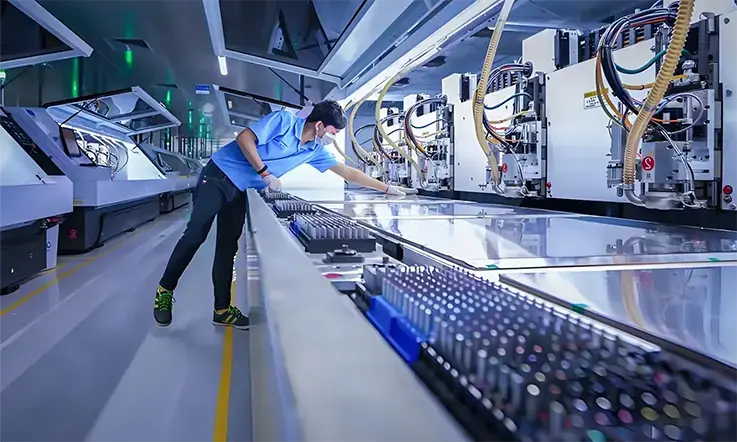
For engineers, sourcing professionals, or R&D teams planning to incorporate ITEQ IT-150DA laminates into their PCB designs, accessing accurate cost estimates and technical documentation early can simplify the development timeline. At JarnisTech, we aim to make this process straightforward with prompt, transparent quoting and responsive technical support, helping you proceed with your design decisions confidently.
Requesting Your Free Datasheet and Stackup Information
Before moving into fabrication or prototyping with IT-150DA material, we recommend obtaining the full datasheet and reviewing default stackup configurations.
●Accessing Files: These documents are available through JarnisTech’s online technical library or can be requested with your initial RFQ.
●Datasheet Content: The datasheet outlines material specifications such as glass transition temperature (Tg), coefficient of thermal expansion (CTE), dielectric constant (Dk), and dissipation factor (Df). This data directly influences signal integrity, thermal reliability, and layer configuration.
●Technical Guidance: If your layout requires impedance-controlled traces, differential pairs, or needs to meet specific IPC-4101 classifications (e.g., /126), our technical team is available to provide guidance based on these documents.
Contacting Global Sales or Your Local Distributor
Whether you are requesting prototypes or preparing for a production run, our sales and engineering teams are ready to assist you worldwide.
1.Direct Contact: You can reach JarnisTech directly using our online contact form, by email, or via real-time chat on our website.
2.Regional Support: For customers in North America, Europe, and Southeast Asia, we also offer collaboration through regional distributors who can assist in your native language and help arrange local logistics for quicker turnaround times.
3.Information for a Precise Quote: To receive an accurate quote, please provide your intended board specifications. This typically includes:
●Layer count
●Finished copper weight
●Trace width and spacing requirements
●Via types (through-hole, blind, buried)
●Any special surface finishes (e.g., ENIG, HASL, OSP)
Our Quoting Process: Our fabrication team will evaluate the stackup requirements specific to the IT-150DA material and provide a tailored process recommendation, along with clear pricing and lead time information.
Exploring Our Custom Stackup Engineering Service
ITEQ IT-150DA is well-suited for applications demanding thermal reliability and electrical stability, especially in high-frequency or harsh environments. To make full use of its performance characteristics, custom stackup design is often highly recommended.
●Professional Engineering Support: JarnisTech offers engineering support to help customers achieve suitable impedance control, signal separation, and power integrity, which is particularly helpful when designing high-speed, multi-layer HDI PCBs.
●Collaborative Design: You are welcome to submit your schematic, netlist, or power distribution diagram. Our process engineers will then propose a PCB structure that aligns with your impedance targets, CAF resistance goals, and thermal load expectations.
●Manufacturability Focus: All recommendations are made with manufacturability in mind, aiming to help you avoid costly revisions at later project stages.
FAQs About ITEQ IT-150DA PCB
Q: What are the recommended storage conditions and shelf life for IT-150DA laminates and prepregs?
A: Cool, dry, UV-protected storage. Prepreg: ~3-6 months; laminates longer. Check ITEQ datasheet.
Q: What is the typical Maximum Operating Temperature (MOT) for PCBs made with IT-150DA?
A: Around 130-150°C, application-dependent. Refer to material’s UL file.
Q:In what standard thicknesses and copper weights is IT-150DA commonly available?
A: Various standard thicknesses (e.g., 0.2-3.2mm) & copper weights (e.g., 0.5-3 oz).
Q: Beyond general high-speed use, how suitable is IT-150DA for specific RF/microwave frequency bands?
A: Suitable for some lower RF/microwave (e.g., up to X-band); specialized materials often better for higher frequencies.
Q: How does the material cost of IT-150DA generally compare to standard FR-4 laminates?
A: More expensive than FR-4 due to higher performance and reliability.
Q: Can IT-150DA be used in rigid-flex PCB applications?
A: Primarily for rigid PCBs; use in rigid sections of rigid-flex requires careful design and validation.

